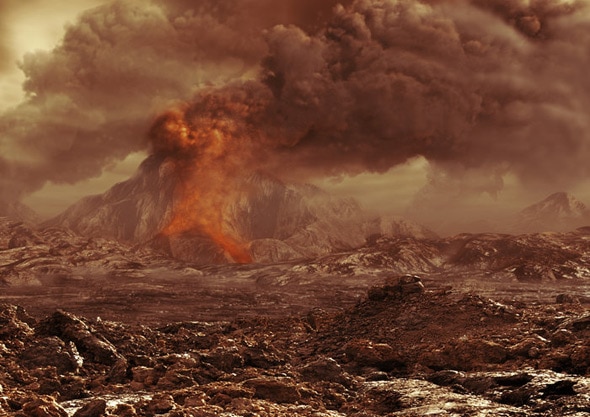Create a free profile to get unlimited access to exclusive videos, sweepstakes, and more!
Are Volcanoes Still Erupting on Venus?

There are a handful of known currently tectonically active objects in the solar system: Earth, of course, plus Saturn’s moon Enceladus, Neptune’s moon Triton, Jupiter’s moon Io (the actual most active body known) and (most likely) Jupiter’s moon Europa.
And now we may be able to add Venus to that list. New evidence strongly suggests there are currently active volcanic vents on the surface of Earth’s sister planet.
I’m actually pretty chuffed about this. We’ve had tantalizing evidence for years that something is bubbling and brewing just beneath Venus’ surface. The top of the mountain Idunn Mons is clearly hotter than surrounding terrain, for example. Lava flows have been seen to be warm as well, and they are certainly less than 2.5 million years old, and possibly far less. Sulfur dioxide, a known volcanic gas, has been seen to spike in abundance then fade with time, which looks very much like a volcano outgassing (though it could simply be due to shifting winds).
But new results from an old mission provide what may be the most important evidence yet that Venus is still puffing away: The ESA Venus Express probe, which completed its eight-year mission last year, found several hot spots on the surface of the planet, and they were all located in rift zones; radial cracks around a volcano where, on Earth at least, magma is pushing up on the surface and flowing out.
Better yet, these hot spots flashed into existence and then faded away over the course of a few days. This is exactly the sort of behavior you’d expect from ongoing volcanism.
Observing the surface of Venus is difficult because of its thick, opaque atmosphere (a product of a runaway greenhouse effect). The observations were at the limit of what the camera could do, but Venus was accommodating by providing really big temperature spikes: One may have reach more than 800° Celsius, 350° higher than the surface average.
The camera’s field of view is large, so the resolution is low, but it’s possible these hot spots may be as small as a square kilometer. All in all, these really sound like lava eruptions to me. I’m no expert, of course, but then the people who did the research are.
Studying Venus is important. In many ways it’s very much like Earth. It’s roughly the same size and mass, which means the same density, and that implies we have similar compositions. So why is Venus so blisteringly different? Compared with us, we can ask, “What went wrong?” Why is its crust so thick? Why did the greenhouse effect run away there, and not here? Why does Venus appear to have a surface that’s everywhere the same age, as if a globally catastrophic event repaved the entire planet?
Looking to other planets to understand our own is a critical part of planetary science, and given the current state of Earth’s atmosphere, it’s something we must do. Together with studying our own planet (something the current congressional majority is dead set against, for some odd reason) these are matters that are critical to our own survival.
That’s why these new results of an extant volcanic Venus are so exciting. That, plus the more purely scientific reason that it’s just plain cool. Venus gets closer to Earth than any other planet in the solar system, yet still hides many secrets. What more is there to learn about it?
I’ll leave you with this, my episode of Crash Course Astronomy about Venus. I wonder how many of the questions raised in it will be answered in the coming years?


























